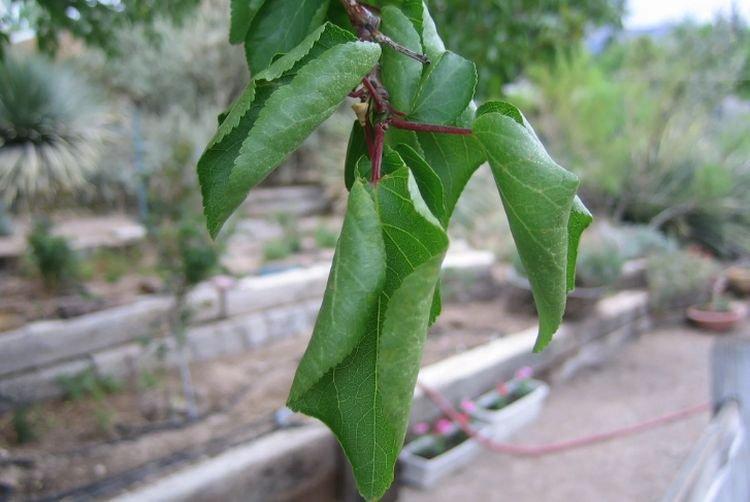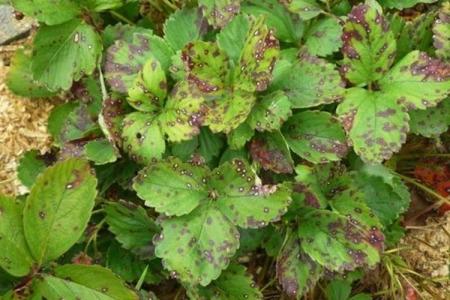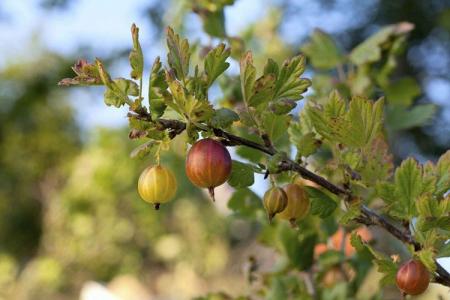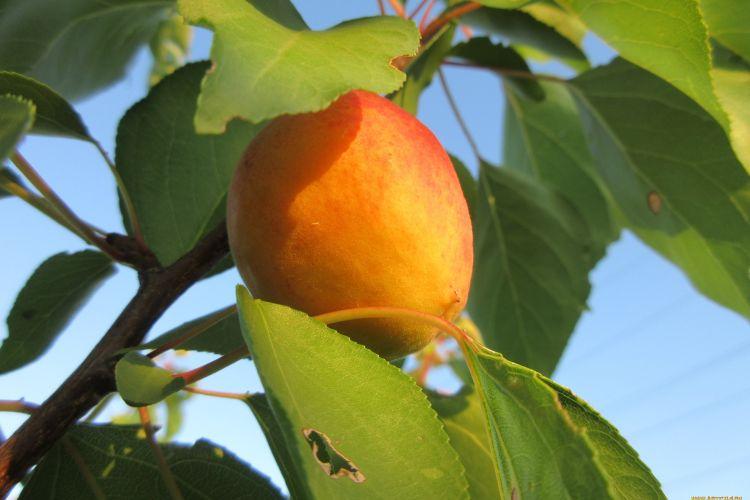
Ripe apricots are rich in potassium, and are also useful for stabilizing blood pressure and strengthening the cardiovascular system. But for a truly bountiful harvest, trees need to be healthy on their own. Today we will tell you about the most common leaf diseases that can ruin your entire planting!
Bumps and bumps on the leaves
Apricot leaves become lumpy and bumpy due to pests, stress and fungus. In the worst case, these can be tumor processes - but this is rather an exception.
- Aphids, scale insects, weevils and other insects leave tubercles on the leaves when they equip the masonry from the back side;
- Orange bubbles are formed on apricot leaves when damaged by red spot or polystygmosis;
- Small pimples-ulcers cover the leaves and bark of fruit trees, patients with cytosporosis.
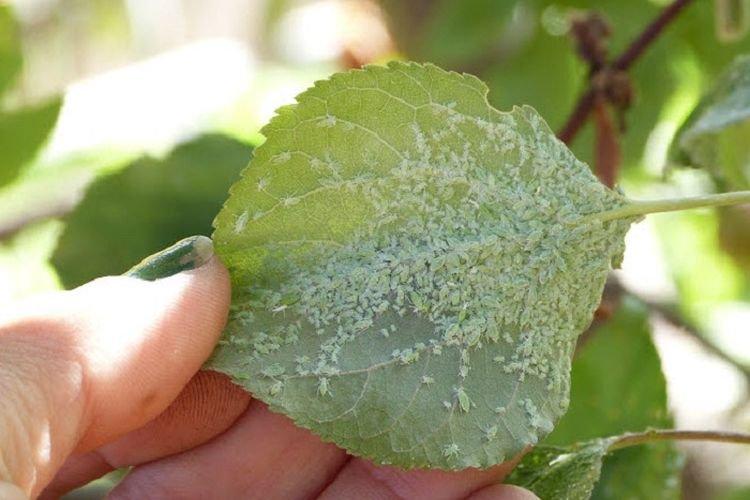
Leaves turn yellow and dry
Yellow and dry leaves are not only ugly, but also dangerous. If this is not a natural withering away at the end of the season, then the first bell is that something is wrong with the apricot!
- If the apricot dries up from lack of water, the leaves will turn yellow and dry out. And if the tree is poured too abundantly, they will begin to rot and soften;
- In case of any serious violations of agricultural technology and conditions of maintenance, the tree turns yellow and dries. This is a natural response to stress;
- After rains or daytime spraying on hot sunny days, dry and yellow spots of burns remain on the leaves;
- When mites and other garden pests suck out all the juices from the leaves, they also wither and dry;
- In case of mosaic disease, apricot leaves are covered with a chaotic mosaic pattern. Alas, a dangerous viral disease is not cured at all;
- Plumpox most often directly affects plums, but apricots can also become covered with yellow rings and loops because of it.
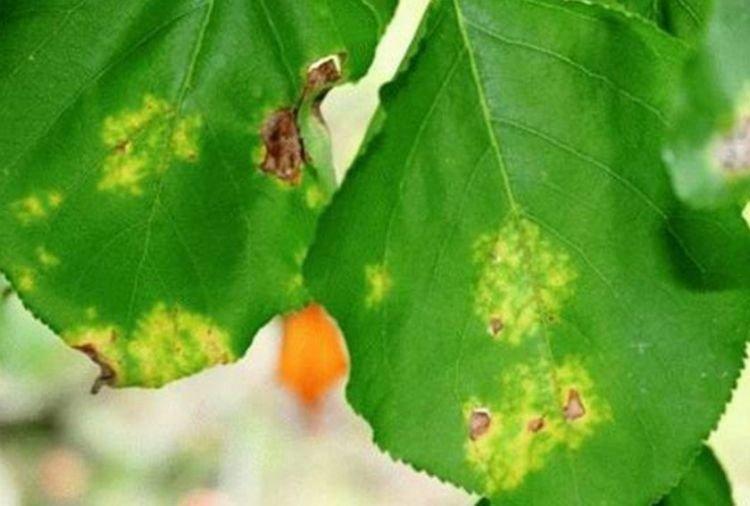
Brown spots on apricot leaves
Apricots suffer from dozens of fungal pathogens and many of them leave brown, rusty or brown spots on the leaves.
- All fruit crops suffer from scab to varying degrees. Dark spots cast olive and appear to be covered with a bloom;
- Clasterosporium leaves small gray-brown spots on apricot leaves, which gradually dry out and fall out. This fungus is popularly called "perforated spot";
- Septoria is a white spot, because whitish centers remain in the middle of brown spots;
- Bright red spots are spreading on the leaves of trees due to rust fungus;
- Coccomycosis is a bit like rust, but the spots are smaller and redder;
- Monoliosis leads to drying out and rotting of young shoots together with leaves;
- Marsoniasis is a fungus of fruit trees, which manifests itself if you neglect the sanitary thinning of the crown;
- Bacterial spot leaves dark brown spots on the leaves. In the early stages, they are rounded, but gradually blurred and smeared;
- Red, red and even purple spots can appear with a deficiency of iron or copper. Sometimes it can be other trace elements, so we recommend complex feeding.
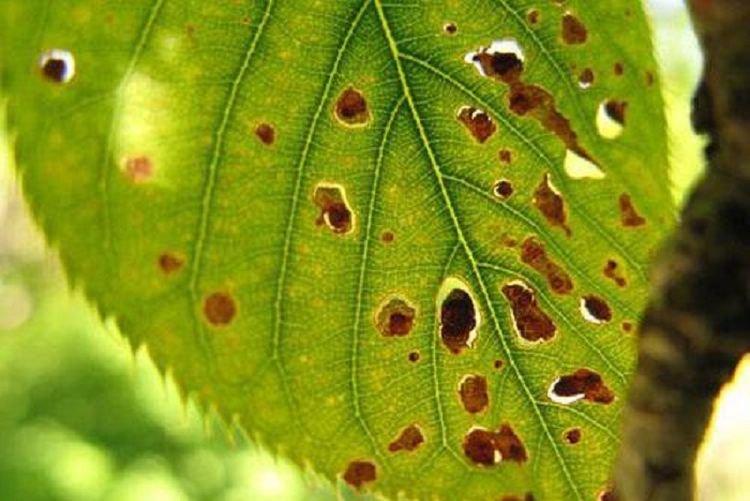
Apricot leaves turn black
Blackness on the leaves can be spots or bloom - and then the cause is again in the fungus. But if it seems that the apricot is burning up, it will hardly be possible to save the tree.
- Apricots turn black and wither if the root system is damaged. Mechanical injuries are rarely so severe, but burns with improper feeding are quite;
- Small black dots, scattered over yellow and brown spots - this is a symptom of brown spotting of apricots;
- After the invasion of sucking insects, a black bloom often appears on the leaves, which resembles soot. This is how the sooty fungus of the same name is manifested;
- In bacterial necrosis, the black leaves look burnt and the apricot is covered with open sores. In advanced stages, it is impossible to save such a tree.
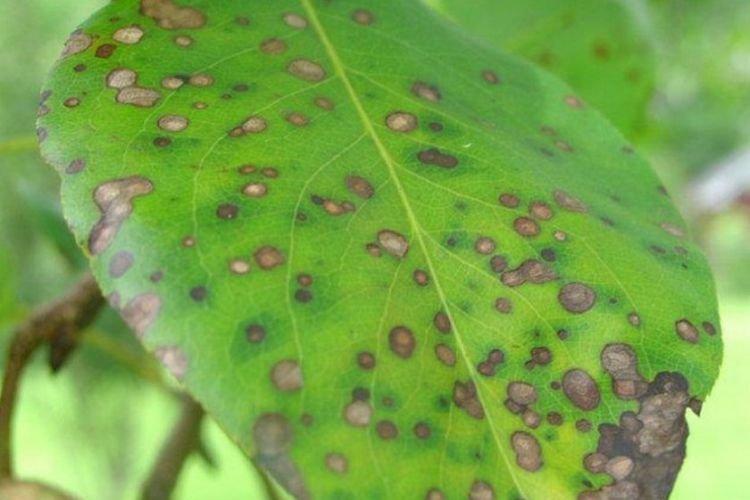
White bloom on apricot leaves
Another type of fungus leaves a white velvety coating on apricot leaves. No need to try to erase it, but rather treat the tree with fungicides!
- The most common cause of white bloom is powdery mildew. The fungus is so ubiquitous that it infects any plants and it is almost impossible to avoid it completely;
- A spider mite leaves a whitish cobweb on the leaves and between them, which can be mistaken for a plaque;
- Stone fruits suffer from a milky sheen that makes the leaves appear silvery.
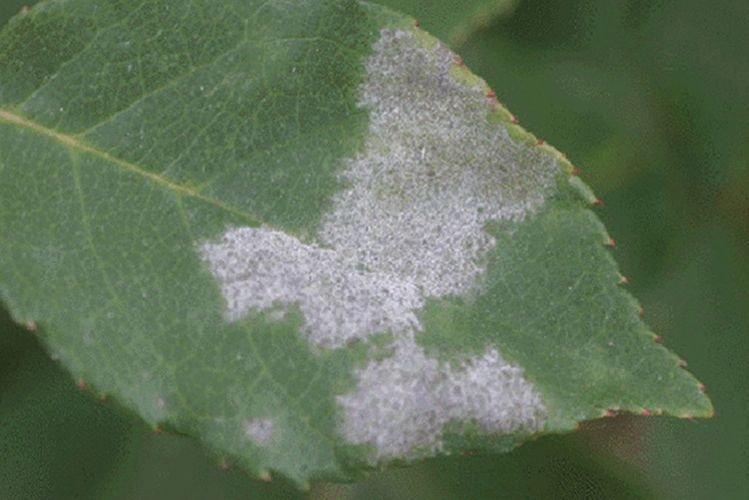
Pale and light leaves
If the green apricot leaves suddenly start to fade - check if everything is in order with leaving. Most often, apricot reacts in this way to any changes or violations in the content.
- At the very beginning of spring, apricots must be fed with nitrogen. It depends on this whether the leaf mass will be juicy and green or faded and stunted;
- If the apricot does not have enough light, the process of photosynthesis is disrupted, as a result of which the production of green pigment is also disrupted;
- When the soil is too poor in general, the apricot grows weak and painful. Therefore, regular seasonal feeding is needed.
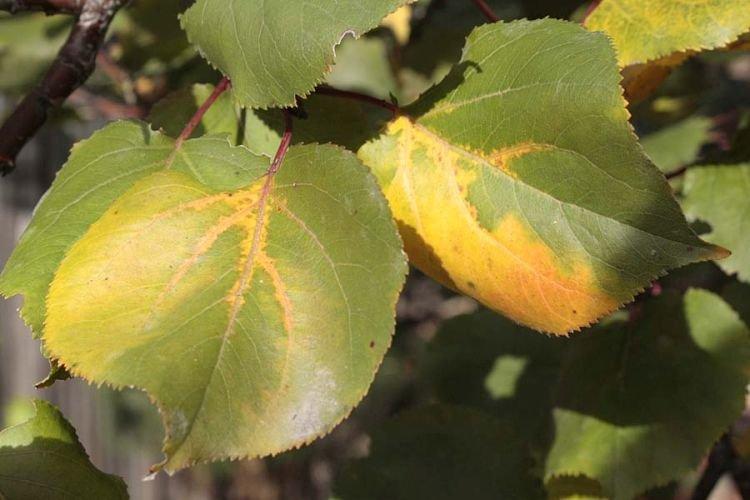
Apricot leaves curl
This is not the most common apricot problem, but it can be very dangerous. The main thing is not to miss a dangerous virus that can hide for years and spread throughout the garden.
- Leafworms and some other types of caterpillars pupate in the leaves, which makes them look twisted and in cobwebs;
- Apricot leaves shrink, wrinkle and wither if they lack light, air, space and nutrition. To avoid this, preventive crown pruning is needed;
- Apricots rarely suffer from kinkiness, but the virus cannot be cured, so you need to keep that in mind. Sometimes deformed, twisted leaves may turn red;
- Dwarfism is another disease that is difficult to identify in time. Leaves grow small, crooked and weak.
